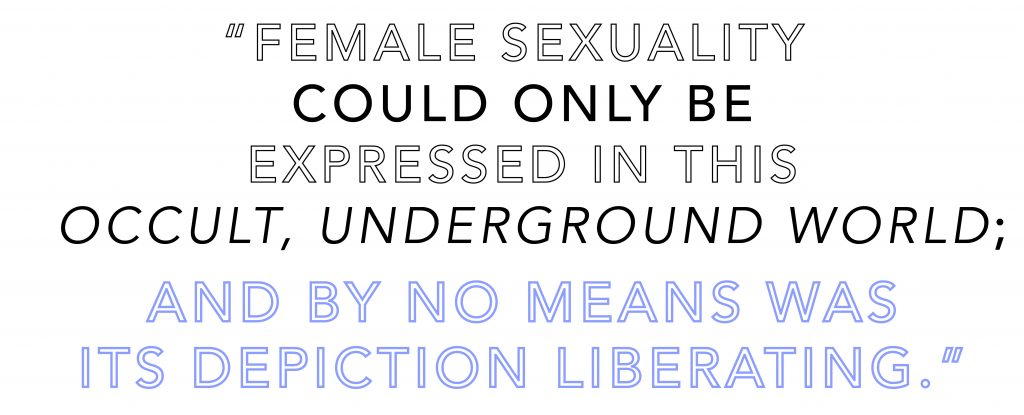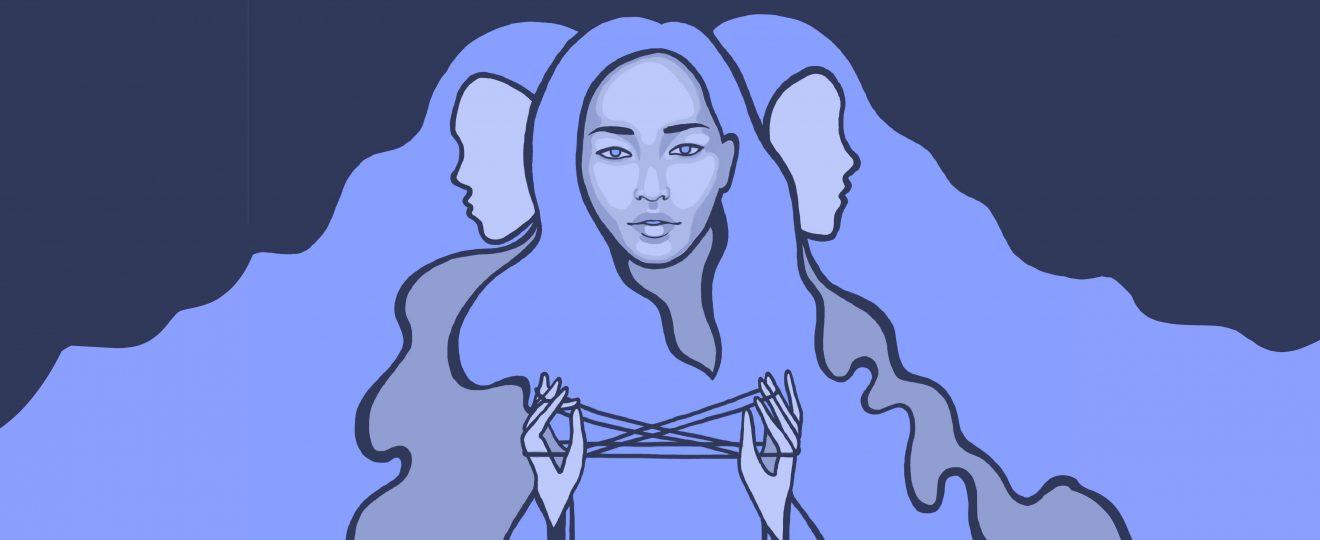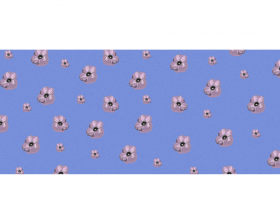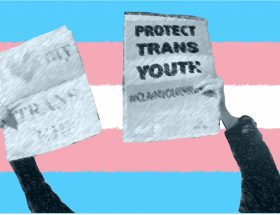“Men look at women. Women watch themselves being looked at. This determines not only most relations between men and women but also the relation of women to themselves. The surveyor of women in herself is male; the surveyed female. Thus she turns herself into an object – and most particularly, an object of vision: a sight.”
(John Berger, Ways of Seeing, p. 47)
Shortly after turning twenty-one, I realised that I had very few original ideas about my own body. Most positive notions I had about my body were direct extensions from compliments I had received, tending to centre around the parts of my body that are most commonly sexualised: my ass, my abdomen. The pieces of body that I critique stemmed from snide remarks, jokes, and what people thought were harmless comments. When I asked my female friends if they felt the same, they agreed. As with many things we feel throughout our human experience, we all collectively felt a certain way but had never coherently expressed to each other how it made us feel, despite spending hours together complaining about the male gaze and the expectations placed upon female bodies. We had all internalised the narratives that were fed to us, despite our disdain for the system that perpetuates the flourishing of these narratives.
As social beings, I am not even sure it’s entirely possible to remove ourselves from the process of socialisation that causes us to inherit certain beliefs about our body. These beliefs were not created by us, or even created by those who voice them to us. Expectations of the female body are a construct of the systems we live under: patriarchy, capitalism, and white supremacy (the golden trio!). Patriarchy is a system in which men wield more power that women, including but not reserved to: economically, socially, politically, and culturally. Western, patriarchal masculinity is a belief system that has enforced binary gender identity and relations. Society glorifies white, able-bodied, feminine, thin female bodies as the beauty standard all women should aspire to. As someone who fits into those criteria in every form, I still found myself feeling I was not enough; I continued to shrink myself under the invisible but omnipresent male gaze, stripping my body of hair and striving to keep myself toned. And this is with the privilege of fitting in with European beauty standards; now imagine the pressure that is exerted on black female bodies, brown female bodies, trans female bodies, non-gender conforming bodies, and disabled females (and any of these identities that may intersect for an individual).
We internalise the male gaze and patriarchal narratives to the point that they become part of us. So, if your female friends have ever made comments that your armpits are getting a bit hairy, your boobs are saggy, your bum is flat – those are a product of the internalised male gaze. As John Berger states in the quote I began this article with, “the surveyor of women in herself is male; the surveyed female.” Having control over your own sexuality and sensuality is a form of protest and rebellion for a woman in contemporary society.

Studying a module on the early modern European witchcraze has given me a new perspective of patriarchy.
Witchcraft. I am sure for most people, the immediate image that the brain pulls together for you when reading that word is a shrouded, shadowy figure of an old devious woman, bent over a cauldron (perhaps shouting boil, boil, toil and trouble, and letting out a cackle for good measure.) This is completely fair, don’t get me wrong. This is the image of a witch that we are classically presented with, from the days of Disney’s evil fairy godmothers, to Macbeth, to contemporary colloquial references to elderly spinsters. This may not be the only stereotypical image of a witch that springs to mind: it may be that of a sexually devious, seductive young woman, like Melisandre from Game of Thrones, or Violet from American Horror Story: Coven, who kills every man she has sex with just through the unknown, lethal powers of her vagina.
One thing that underlies and compounds these stereotypes is the feared, occult power of female sensuality. These stereotypes are grounded in the historic perception of the functions of the female body, in age old conceptions that a woman’s existence centres around procreation, motherhood and fecundity. The elderly figure of the witch was seen to be past the stage of fertility and was thus “barren”; her sexual desire was insatiable, as it was past being centred around procreation. The figure of the young temptress witch was rooted in anxieties of subverting the “natural” sexual order.
In the early modern European witchcraze, these beliefs manifested into punishment and persecution. These stereotypes were moulded and reinforced by the writing of prosperous, white, male, European intellectuals, whether it be inquisitors, demonologists (intellectuals who formed witchcraft into a sort of pseudo-science), or artists. Witches were depicted to meet at Sabbaths (secret sect meetings), at which they danced around fires naked, engaged in orgies, and fucked the devil (just to name a few of their bonding activities!). The witches’ Sabbath was an inversion of normal sexual order. Female sexuality could only be expressed in this occult, underground world; and by no means was its depiction liberating. In one chapter of the most famous witchcraft treatise, the Malleus Maleficarum, a story is told of a witch who steals penises from various men in her village, and collects them in a nest of penises. One victim of penis-stealing was allowed to pick a new penis from the nest; he tried to pick the largest one in the nest, but the witch told him he couldn’t, as “that one [was] the parish priest’s”. Women existing as sexual beings was ungodly, unnatural, demonic, and was controlled by the lens of elite, white, European men, who’s beliefs and work upheld patriarchal masculine ideology. Witchcraft consolidated and became a prosecutable offense under this framework.
Where does this fear of female sexual power come from? In the 1980s, gender historian Mary O’Brien posits the theory that “male domination is the effect of men’s desire to transcend their alienation from the means of reproduction of the species.” Although this theory is flawed and not completely applicable to contemporary society, as some women cannot reproduce (for example, trans women), it tells us something important: that patriarchy is grounded in sexual anxieties and fear of disrupting binary gender roles. Patriarchy teaches us that “men can be sexual beings in the way that woman cannot” (from the Chimamanda Ngozi Adichie’s speech famously sampled in Beyoncé’s song ***Flawless). As bell hooks puts it, patriarchy teaches men that they must crave sex in a more encapsulating and insatiable manner than women. Witches were portrayed to be the inversion of the normal sexual order; thus, it is particularly interesting to point out that they were painted as being sexually insatiable.
It did not take me long to draw out the parallels of early modern society with contemporary society. White, Western, power-wielding intellectual males were and are the architects of the bounds in which female sexuality and sensuality can be expressed. White, Western, power-wielding intellectual males were and are threatened by female sexual and sensual power (see: good ol’ Donald Trump!). Patriarchy has just adapted. In the early modern period, society’s belief system was rooted in religious dogma, and the idea that the devil could work within the senses to corrupt people’s morals. Whilst that is no longer the accepted and widely held belief system of modern society, we still hold onto those notions of morality, purity and chastity in more covert forms. In the early modern period, those women who upheld beliefs of witchcraft and condemned other women in their communities for me echoes the role of white “bourgeois feminism” in contemporary society. They were women who upheld patriarchy by not protecting other, more marginalised women. Similarly, contemporary white “bourgeois” feminism is deeply flawed as it does not take an intersectional approach, meaning it commonly does not protect and advocate for the rights of black, trans, non-gender conforming or disabled women (as writer and influencer Chidera Eggerue (aka The Slumflower) puts it, “white feminism is just white patriarchy with a pink pussy hat on”).
With all this talk about the past and the present, I thought it would be necessary to touch on the future. In her book Feminism Interrupted: Disrupting Power, Lola Olufemi discusses the importance of futurity in contemporary feminist work. She states that the question “how should we think about the world?” is one of the most key questions we can ask ourselves when labelling ourselves as a feminist, as it is both important for us to feel free but to also make sure that we get free. She poses an ideal world (which she admits is currently a utopian vision) in which women “are liberated from the gender binary’s strangling grip and the demands it places on our bodies.” In a podcast on the platform Radicals in Conversation, Olufemi co-hosted a discussion with radical feminists Gail Lewis and Jade Bentil in which they stressed the importance of constructing your own image of how you want society to function and what values you wish it would be based on, and then to live that reality every day. Whilst in contemporary society this will mean that whilst you may feel free, you are not necessarily living free, and for many (especially marginalised) women it will be dangerous living authentically, I think this is a beautiful and hopeful way we can strive for and work towards a more just society.
This is not just work for women; it is equally work for men. I know many people are currently questioning and deconstructing their racial belief system and becoming aware of how they may be complicit with white supremacy. It is important to take an intersectional approach and consider how you also have been complicit with the power of (white) patriarchal masculinity. Question the patriarchal narrative that you may have internalised. Harness the power of what has made women magic and threatening in the past, what makes women magic and threatening in the present, and use that as fuel to carve a world where women do not just have to work to feel free, but can be free.
Art by Tia Merotto




